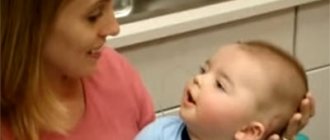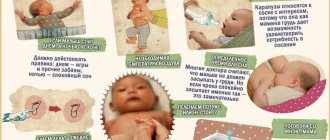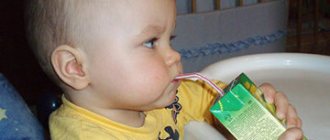The structure of the eye, how vision is formed
Despite the close relationship between mother and baby, he will not be able to consciously recognize her so soon, since in the first days of life he still sees very poorly. Binocular vision, or the ability to see with both eyes at the same time, appears at 3 months.
In infants, the eyeball has a short anteroposterior axis. Therefore, they are farsighted and have difficulty seeing close up. Their optic nerve and muscles are underdeveloped, which is why strabismus is common during this period. The cornea is enlarged and lacks blood vessels. Reflexively, the baby squints and often closes his eyelids.
Physiology of the process
It has been scientifically established that a person is born sighted, but he cannot fully see the world around him. This is due to the fact that in newborns the peripheral nervous system has not yet been formed, and it will undergo significant development.
To form a full-fledged visual image, the following body systems must work:
- analyzer;
- sensation;
- perception.
A simplified process looks like this: the eyes receive a picture and send it to the brain, and the brain recognizes it and forms the final image. The interaction of these components is vision.
Stages of vision development for a child up to one year old
| Age | Development and skills |
| Newborn up to 1 month | A newborn does not yet know how to look with both eyes and focus his gaze, his eyes sometimes run wild and squint, and weak light sensitivity is characteristic |
| 2-3 months | Begins to distinguish bright objects and follow a moving object, sees red, orange and yellow colors, perceives the absence and presence of color |
| 4 months | Feels and evaluates distance, begins to perceive blue, green and violet colors, focuses his gaze on objects and follows a moving object, reacts to the faces of people who appear nearby |
| 5-8 months | Distinguishes between objects, even the smallest ones, follows moving objects, recognizes familiar faces and things, recognizes some geometric shapes (ball, cube, cone), masters distant spaces |
| 9-12 months | Sees well at any distance, distinguishes many colors and patterns. By the way, by the age of one year the baby’s eye color is finally formed. |
What does a newborn see?
The baby can only distinguish objects that are in the immediate vicinity of his eyes, at a maximum distance of 30 cm. Everything else appears to him as blurry spots, and objects look as if in a fog. In order to look at something, he needs time to focus. His eyes still don’t listen well and tend to look in different directions.
The first visual sensations are divided into light and darkness, and many objects appear black and white; the entire surrounding space is a world of shadows.
At 3-4 months the baby is able to follow moving toys and objects, and at 6 months he can distinguish small objects and recognize toys. Relatively normal vision is formed in a person at 6-8 months.
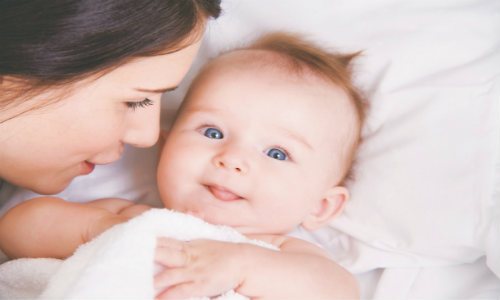
Newborns are able to see:
- bright lighting or its complete absence;
- movement of people and large objects;
- some objects from the environment.
Features of infant vision
Interestingly, the development of the eyes in the fetus begins already on the 18th day of pregnancy, and by the seventh month the structure of the eyes is already almost formed. At this time, the baby's eyelids open. Immediately after birth, the child sees very poorly, since the eye muscles are poorly developed. A newborn does not distinguish colors and does not distinguish three-dimensional figures.
In the first month, the newborn distinguishes only large and bright objects; he reacts weakly or not at all to the presence or absence of light. In addition, it happens that the baby crosses his eyes. There's nothing wrong with that! With development, the eye muscles will strengthen, and the newborn will see normally.
In the first 7-10 days after birth, the baby cannot stop looking at a person or object for more than 2-4 seconds. By the second month, the newborn focuses his gaze, but still cannot stop it on an object for a long time. The gaze simply glides over the subject. At this time, the baby can only distinguish between white and black colors.
At three to four months, the baby can see and hear better, and the development of vision and hearing progresses noticeably. He already recognizes familiar faces and voices, toys and objects, and knows how to focus his eyes. A baby at this age first perceives yellow and red colors, then green and blue. He distinguishes between bright colors and pure colors, and already follows moving objects with his eyes.
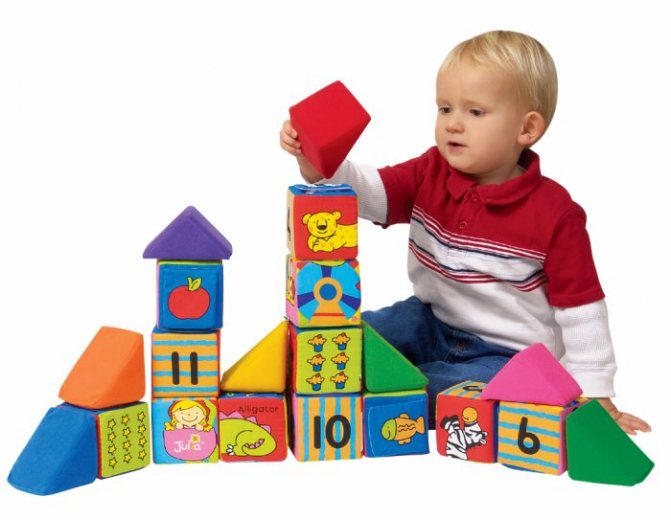
At six months, the child sees and observes small objects, recognizes and identifies favorite toys. At the age of six months, children should be able to look at a toy and distinguish the thing from its surroundings. Read what else your baby can do during this period in the article “Baby Development at 6 Months.”
When does a child begin to recognize his mother?
Conscious recognition of the mother occurs at approximately the age of 1 month. As a rule, it is this very dear person who takes care of the baby, is constantly nearby and often leans towards her. The baby remembers his own face and begins to react to its appearance, perk up and smile. At 3 months, he already clearly knows his mother’s face, rejoices and gurgles when she appears, and is also upset if she leaves him.

Possible problems in newborns
Having figured out at how many months children begin to see and hear, we will find out what problems may arise at this stage. Most often, various hearing problems can occur in babies during difficult births. The following provoking factors can cause hearing loss or deafness:
- Transference of rubella or measles during pregnancy.
- Smoking or drinking alcohol while pregnant.
- Taking certain medications by pregnant women (antibiotics and other potent drugs).
Parents should be alerted to such signs as the absence of a change in facial expressions and anxiety in the baby at loud sounds, the absence of a reaction in the baby if you call him by name (after 12 months). You should also worry if at 4 months the baby does not respond to adult voices and musical toys. The presence of various ear diseases can be indicated by such a sign as pulling your ears.

Vision problems can be observed in a baby if his mother suffered from rubella, toxoplasmosis or other diseases during pregnancy. From approximately 4 weeks of life, the baby should be able to focus his gaze on objects for several seconds and follow moving objects with his eyes. You can test this skill as follows:
- Close one eye of the baby, move a bright toy, he should follow it.
- After this, close the other eye and repeat the procedure.
- If the baby does not respond, you should show it to a specialist.
Before 6 months, many children mow. This is considered quite normal. The alarm should be sounded if strabismus persists after six months of age. This symptom should never be ignored. If left untreated, strabismus can even lead to blindness.
You might be interested in: Development of children from 1 month to 1 year

If parents feel that the development of hearing and vision is not normal, they should not consult a specialist. Timely diagnosis and treatment of many diseases in the early stages makes it possible to cure certain pathologies without consequences for the child’s health.
How does a child relate to his mother, relatives and strangers depending on his age (from birth to one year)?
The child begins to remember those persons who often contact him and spend time with him. As a rule, these are dad and grandmothers.
Usually by 4 months he already knows his parents and other loved ones well, whom he sees often.
At the same time, he begins to be wary of strangers and may cry when they appear. At 8-10 months, the child recognizes people who often appear in the house. And after 10 months, he already clearly identifies friends and strangers.
Why doesn't he find out?
A newborn may not recognize his mother and other loved ones if they are at his side or standing behind each other. This is due to the fact that his vision is still sharply narrowed, and he does not perceive people from such an angle.
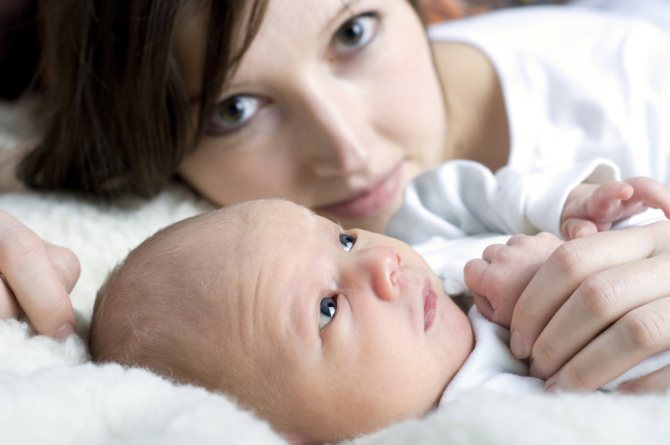
The baby may not recognize her mother because she changed her usual clothes, changed her hairstyle, put on something bright, or something else has changed dramatically in her appearance and her usual image. At this stage, the child perceives a loved one by the totality of sensations, and if something is disturbed in them, this fragile image begins to melt, he may become confused, panic and not recognize his mother.
What do parents need to know?
Parents should know that each child has his own individual characteristics, so the pace of development and time frame for mastering skills may differ from generally accepted ones. For proper vision development, the following recommendations should be followed:
- When showing rattles and toys to a newborn, they must be placed at a distance of at least 25 cm, otherwise this will lead to the development of strabismus;
- examine the newborn’s eyes and prevent the presence of foreign bodies and mucus in them;
- Before going to bed, use dim lighting, and at night you can leave the night light on;
- do not allow direct sunlight to hit the eyes, but do not hide them from bright light, since it, acting as an irritant, causes the eye muscles to work;
- often take the baby in your arms and show him things around him;
- hang toys at a distance of 20-30 cm from the face and change them periodically;
- change the position of the baby in bed so that he does not squint his eyes to one side;
- use facial expressions when communicating;
It is also important to show moving objects to learn focusing.
Formation of vision in babies
How many days after birth does a toddler begin to see? It has been proven that newborn babies can see from the first days of life. According to scientific research, during this period their image may be blurry. Now the final formation of the visual apparatus is taking place. Don’t be surprised if your little one’s gaze is detached, he often looks to the side or squints his eyes. This is normal. It also happens that from the first days of life the baby’s gaze seems conscious. The baby often fixes it on your face or some specific object.
You might be interested in: How to teach children to walk
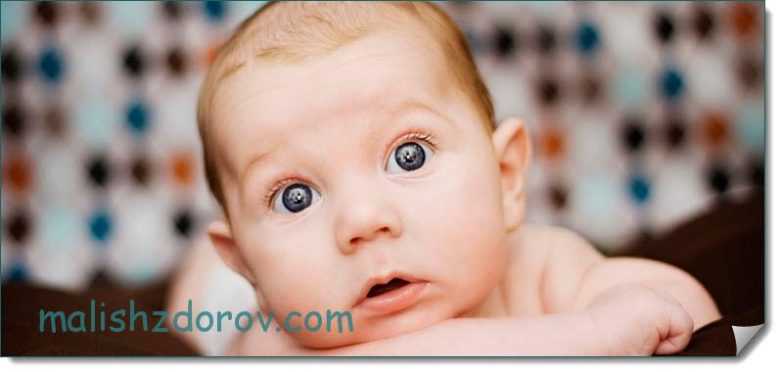
In newborns, visual acuity is significantly lower than in adults. During the first days of life, focusing improves, which is associated with the development of the brain and visual organs. At an early age, a baby does not have the so-called yellow spot. This is exactly the part of the retina where 100% vision is achieved. He will appear later. In the table you can find the stages of vision formation depending on age.
| Age in months | Features of development |
| Immediately after birth | The image is in gray tones, the picture is blurry |
| 1 | Sees mom and dad blurry, but can already distinguish their faces against the general background |
| 2 | The toddler follows large moving objects with its eyes, for example, people or toys. |
| 3 | Sees red and yellow clearly and can focus on moving toys |
| 4 | The baby examines his arms, legs, holds and examines rattles |
| 5 | Sees all colors clearly, often examines things by taste |
| 6 | The light sensitivity of the eyes now reaches 2/3 of the vision of an adult. The baby monitors small and large objects and can consciously focus on them |
| 7-8 | The toddler distinguishes all geometric shapes well |
| 8-12 | The vision of an infant at this age is the same as that of an adult. He clearly sees the shape and colors of objects, looks for things with his eyes that have fallen out of sight, studies toys |
When talking to your baby, try to keep him upright. In this position, vision focuses better. The toy or your face should be 20-30 cm away from the baby's face.
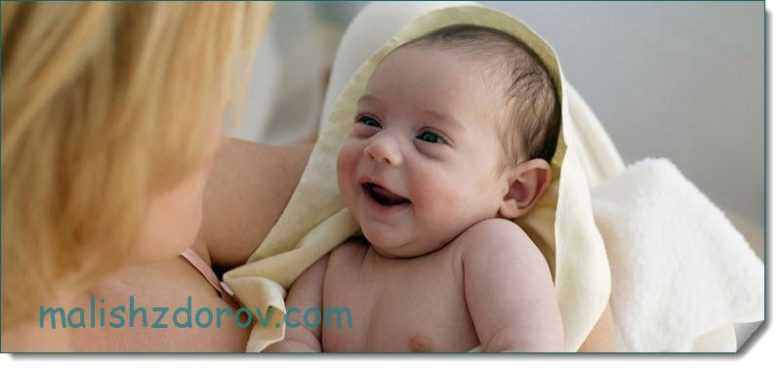
In children, binocular vision begins to develop approximately 6-7 weeks after birth. The baby begins to consciously examine objects from the age of 4 months.

